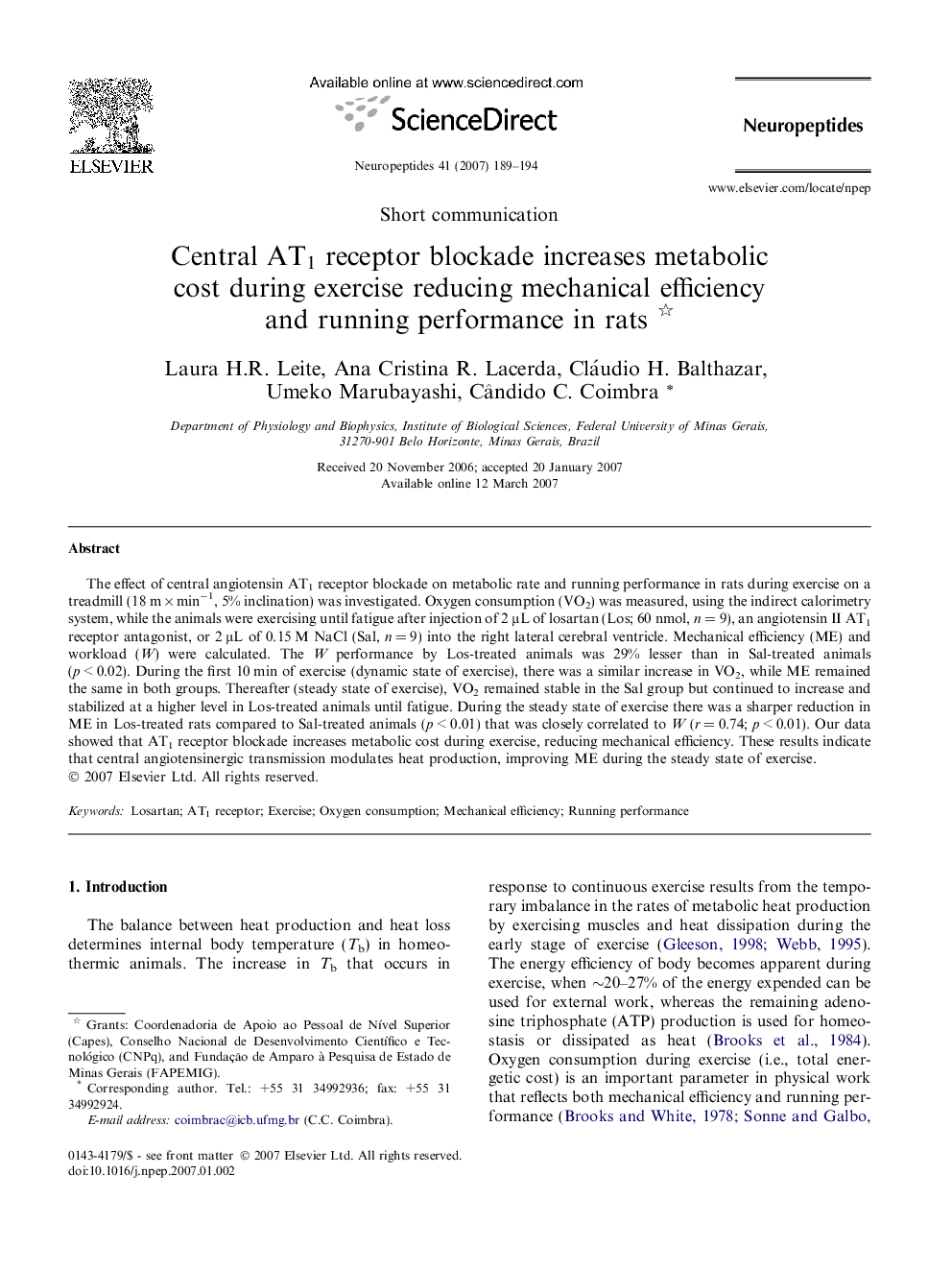| Article ID | Journal | Published Year | Pages | File Type |
|---|---|---|---|---|
| 2808671 | Neuropeptides | 2007 | 6 Pages |
The effect of central angiotensin AT1 receptor blockade on metabolic rate and running performance in rats during exercise on a treadmill (18 m × min−1, 5% inclination) was investigated. Oxygen consumption (VO2) was measured, using the indirect calorimetry system, while the animals were exercising until fatigue after injection of 2 μL of losartan (Los; 60 nmol, n = 9), an angiotensin II AT1 receptor antagonist, or 2 μL of 0.15 M NaCl (Sal, n = 9) into the right lateral cerebral ventricle. Mechanical efficiency (ME) and workload (W) were calculated. The W performance by Los-treated animals was 29% lesser than in Sal-treated animals (p < 0.02). During the first 10 min of exercise (dynamic state of exercise), there was a similar increase in VO2, while ME remained the same in both groups. Thereafter (steady state of exercise), VO2 remained stable in the Sal group but continued to increase and stabilized at a higher level in Los-treated animals until fatigue. During the steady state of exercise there was a sharper reduction in ME in Los-treated rats compared to Sal-treated animals (p < 0.01) that was closely correlated to W (r = 0.74; p < 0.01). Our data showed that AT1 receptor blockade increases metabolic cost during exercise, reducing mechanical efficiency. These results indicate that central angiotensinergic transmission modulates heat production, improving ME during the steady state of exercise.
